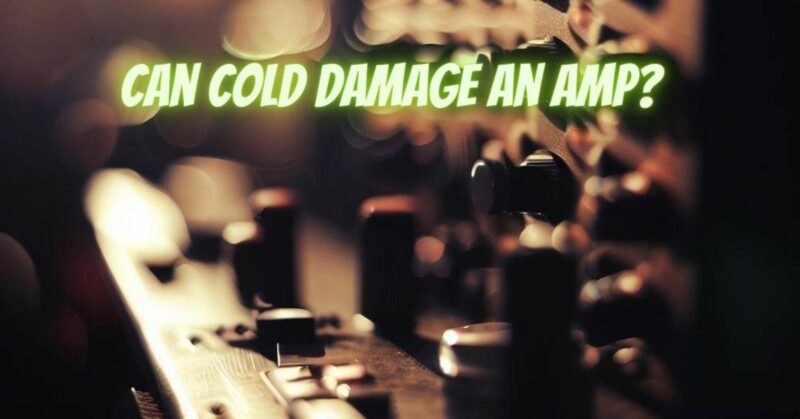Amplifiers are essential components in audio systems, providing the necessary power to drive speakers and reproduce sound. Like many electronic devices, amplifiers are susceptible to environmental factors that can impact their performance and longevity. One such concern is the effect of cold temperatures on amplifiers. This article aims to shed light on the potential risks and effects of cold weather on amplifiers, providing valuable insights for protecting and maintaining these valuable audio devices.
Understanding the Impact of Cold Temperatures
Extreme cold temperatures can affect electronic devices, including amplifiers, in several ways:
- Condensation: When an amplifier is exposed to cold temperatures and then brought into a warmer environment, condensation can form on its internal components. Moisture accumulation can lead to short circuits and other electrical issues, potentially damaging the amplifier.
- Component Stress: Cold temperatures can cause thermal stress on electronic components, especially during rapid temperature changes. Repeated thermal cycling can lead to component failures over time.
- Low Battery Performance: If the amplifier uses batteries, cold temperatures can significantly reduce their performance. Batteries in freezing conditions experience reduced voltage output, which can affect the overall functionality of the amplifier.
- Resonance and Vibrations: Cold temperatures can make materials more brittle, increasing the risk of resonance and vibrations within the amplifier’s chassis. This can result in mechanical failures or exacerbate existing issues.
- Tube Operation: Vacuum tubes, commonly used in guitar amplifiers and some high-fidelity audio systems, can be sensitive to extreme temperature fluctuations. Cold temperatures may affect their operating characteristics and lead to potential damage.
Precautions to Protect Amplifiers from Cold
To safeguard your amplifier from potential cold-related damage, consider the following precautions:
- Acclimatization: Avoid exposing the amplifier to extreme cold temperatures. If you need to transport the amplifier during cold weather, allow it to acclimate to room temperature gradually before powering it on.
- Protective Covering: If using amplifiers outdoors or in unheated spaces, use protective covers or cases specifically designed for amplifiers to shield them from the elements.
- Proper Storage: Store the amplifier in a temperature-controlled environment when not in use, especially during winter months.
- Avoiding Rapid Temperature Changes: Minimize rapid temperature changes by allowing the amplifier to reach room temperature before powering it on after exposure to cold conditions.
- Warm-Up Time: If your amplifier uses vacuum tubes, allow sufficient warm-up time before putting it to full use. This helps stabilize the tube operation and prevents potential thermal stress.
Cold temperatures can indeed pose risks to amplifiers, potentially leading to issues like condensation, component stress, battery performance reduction, resonance, and tube operation problems. By understanding the impact of cold weather on amplifiers and taking appropriate precautions, you can protect your audio equipment and ensure its optimal performance and longevity. Regular maintenance, proper storage, and gradual temperature acclimatization are essential practices to safeguard your amplifier from cold-related damage, allowing you to enjoy uninterrupted and high-quality audio experiences for years to come.


